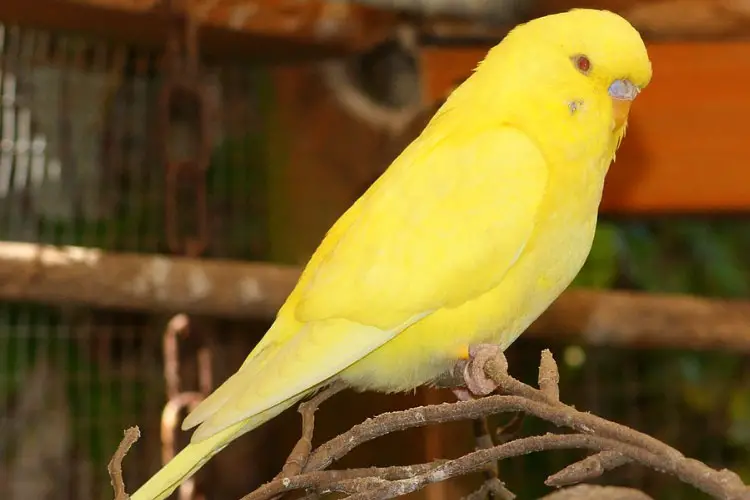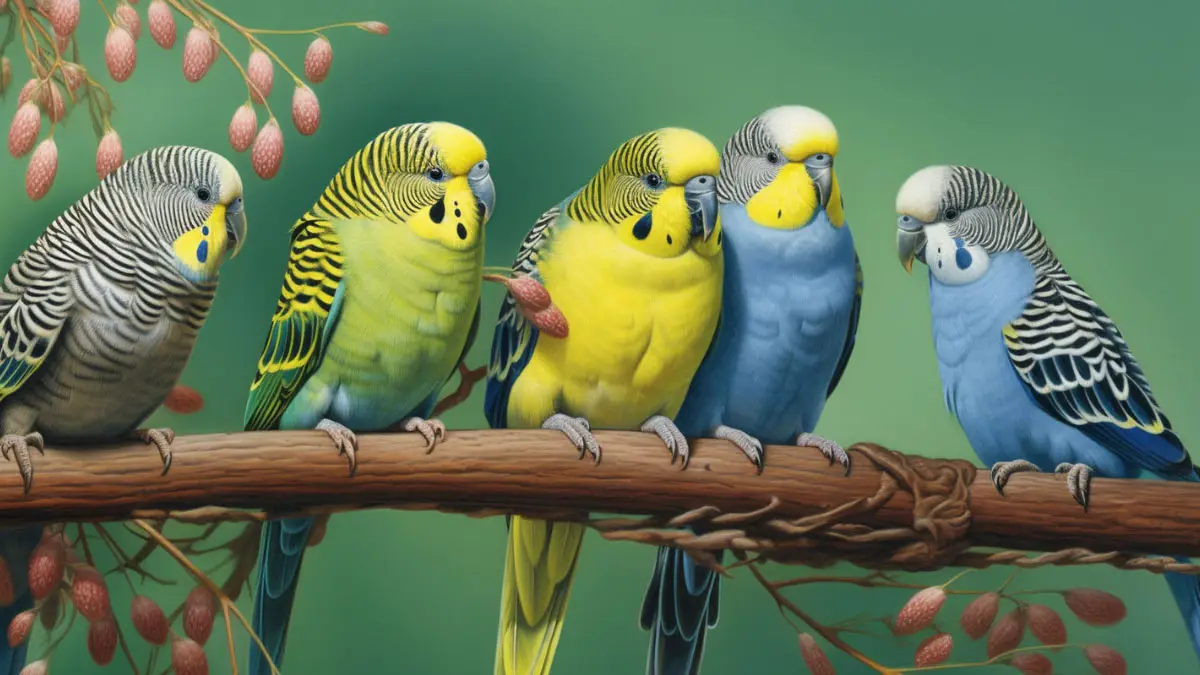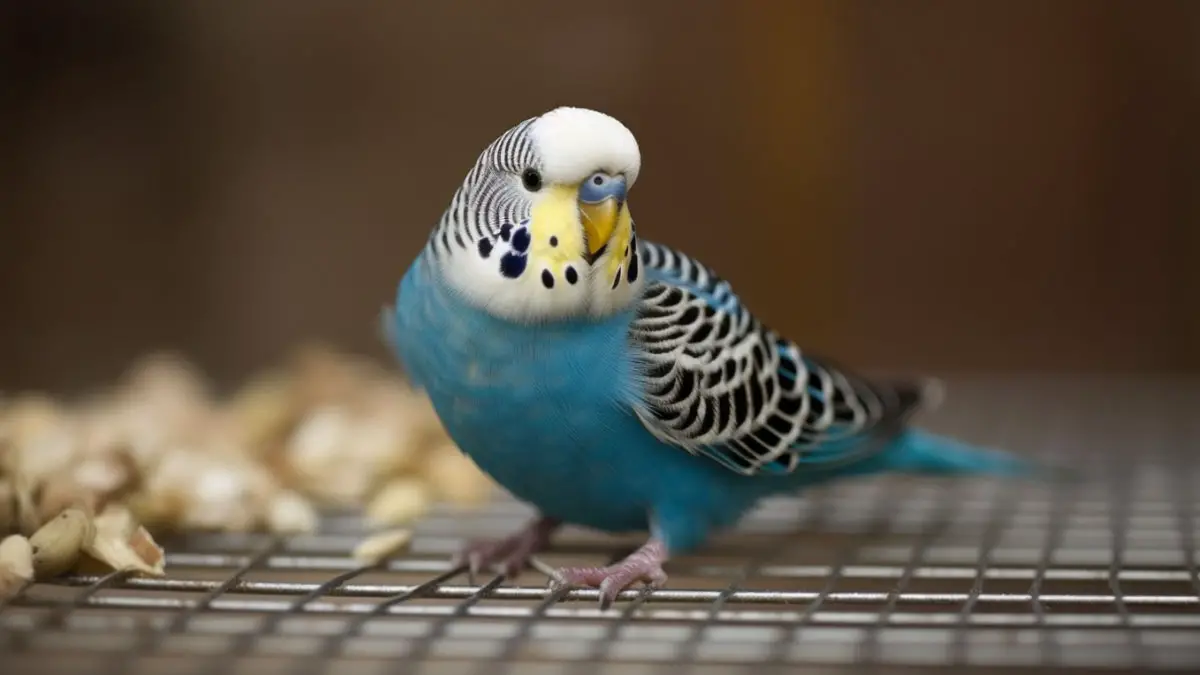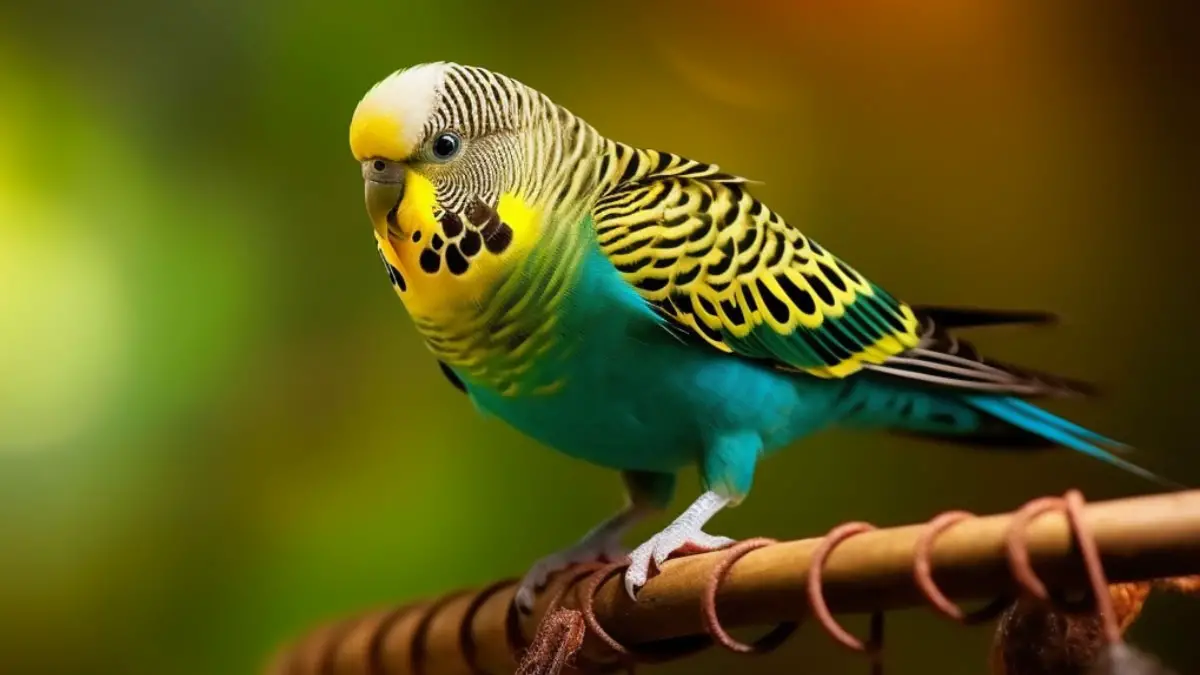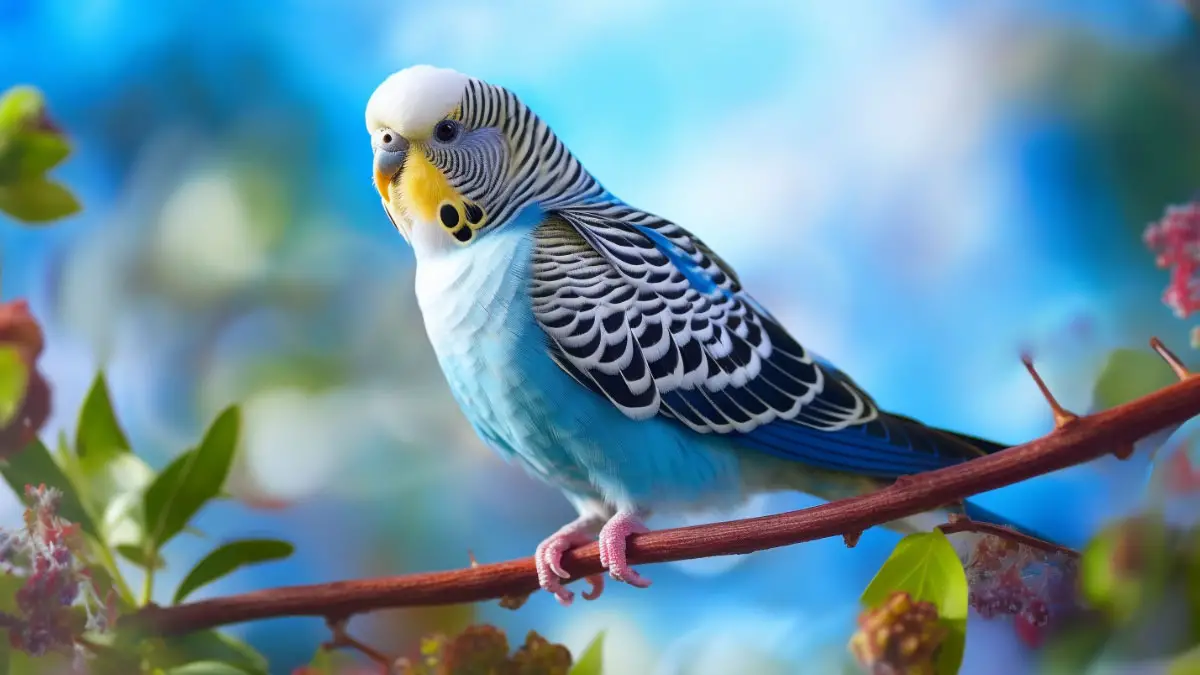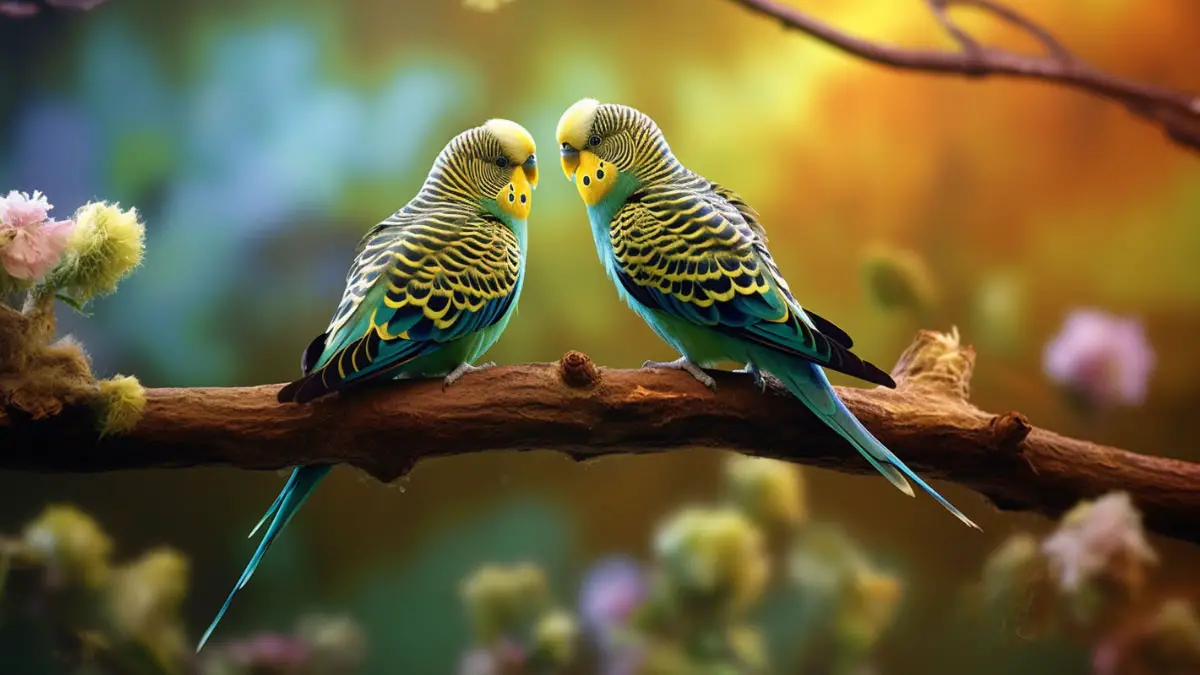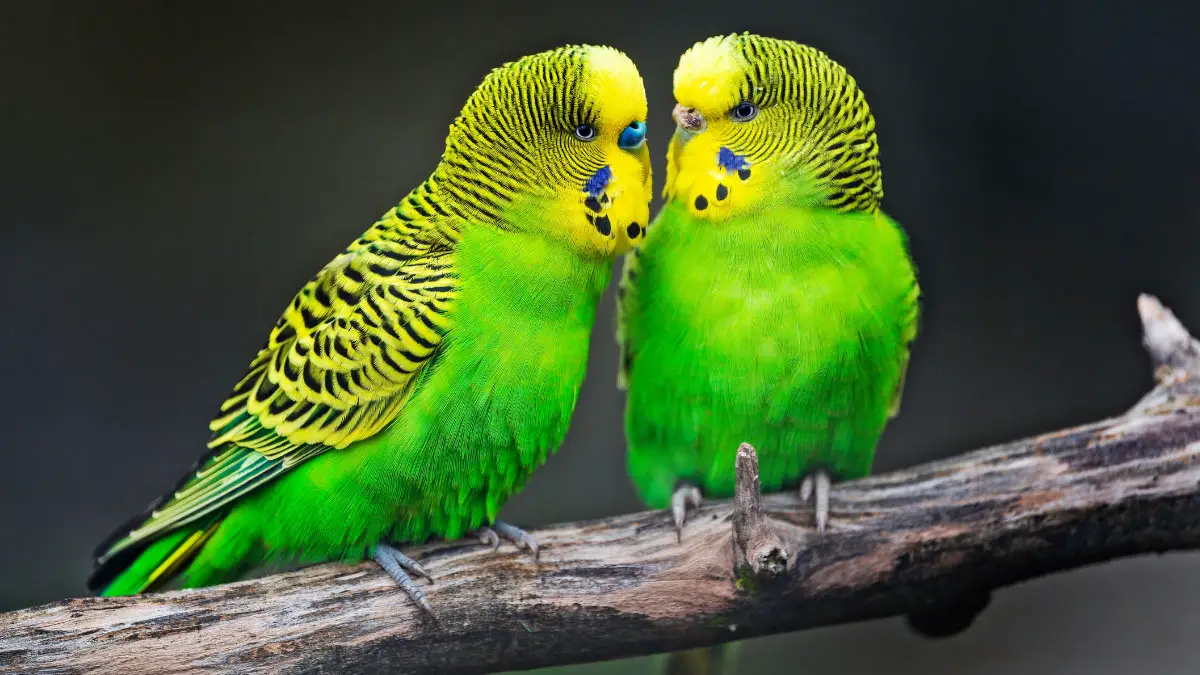In the world, there are approximately 30 mutations affecting budgerigars. Among them are ino mutations, which produce birds with a mono color affecting birds of the green and blue series. Among the mutations are albino, affecting the blue series and lutino.
So, what are lutino budgies? Lutino budgies are an ino mutation of budgies affecting the green series. The birds are characterized by a pure yellow contour feather and pale yellow for flight feathers. They often have red eyes, orange beaks, pink feet, and sometimes have a white patch on their face.
In the article are more details on the lutino budgies, their characteristics, and where you can find them.
What Is a Lutino Budgie?
Between 1870-75 was when the first color mutations in budgies occurred. This went through the oncoming years and in 2010, breeders bred the latest mutation called whitecaps. There are two types of main color series which are blue/white and yellow/green. Most mutations involve a variety of colors in the birds’ bodies, with few of them containing only a single color.
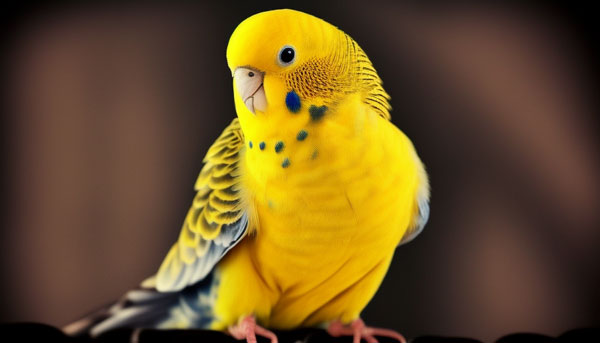
Ino gene removes melanin from the bird’s feathers, skin, and beak, leaving it with a different color from expected. These ino gene mutations include Lutino and Albino, each affecting a certain color in the series. Birds with excessive yellow pigmentations are said to have bird xanthochromism. Albino affects the blue series and the birds have white base color as the ino gene removes markings.
A lutino budgie has a yellow base color as the ino gene removes its coloring. The bird’s feather color is yellow but sometimes paler on its tail and flight feathers. The lutino budgie also has a white or silver patch on its face but bears no marking on its head as other budgies do. The bird’s feet are pink, its eyes red, and its beak orange.
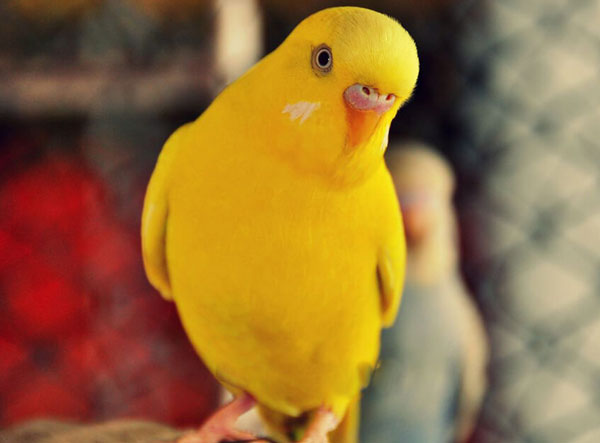
Though they were noted from the 19th century, lutino budgies were officially recognized in the 1930s. Breeding them is sometimes hard, since most male lutino birds don’t visually show the gene. However, with the correct precision or by using lutino pairs, breeders can nurture these yellow mutations with a higher expectation.
Is a Lutino Budgie Rare?
Lutino budgie mutations are considered to be fairly rare compared to other mutations. They require an expert understanding of the gene, to successfully breed this mutation. Also, the male from whom two ino genes must be visible to successfully breed sometimes hides the genes. This among other reasons makes the lutino budgies rare.
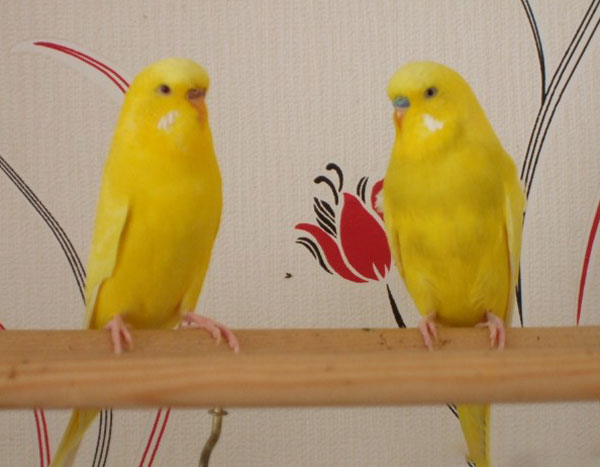
However, this mutation is not the rarest, as that record is held by Anthracite Budgerigar. First bred in 1998, the bird with these mutations has a dark gray base color. Their feathers are gray, with black eyes, gray feet, and black markings on their head.
How Much Does a Lutino Budgie Cost?
Like other rare pets in pet stores, sellers tend to hike the price for these yellow feathered birds. The price can be between $100 – $300, though the price can get much higher or slightly lower. The main factors affecting the price are the bird’s infrequency and if the bird is already trained or not.
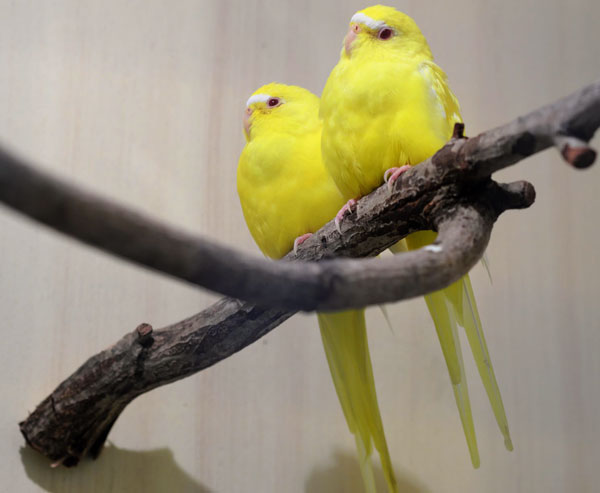
However, it’s best to get avian pets while they’re still young so you can teach them more from a tender age. Though the taming might be difficult at first, the birds are able to adjust to the new environment sooner. Also, the young birds are faster to tame since they don’t have prior attachments with anybody.
Can Lutino Budgerigar Talk?
Lutino budgerigars, like other mutations and birds of the parrot family, can talk. They can mimic human words and learn over 20 words that they can say. However, their vocabulary can hold more words, as a budgie named Puck could utter 1728 words.
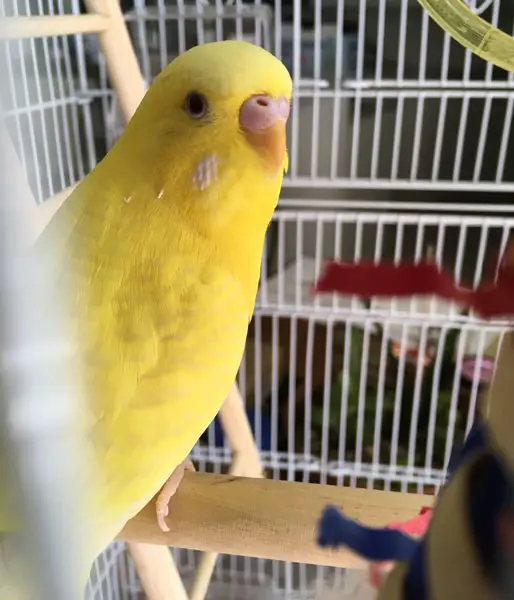
Teaching a lutino budgie a new word can take weeks or months. However, once the bird learns, the other new words are easier and faster for them to understand. A well-bonded bird is also easy to teach by regularly communicating with them, especially the word you want them to learn.
Are Lutino Budgies Female?
Most lutino budgies are females, but it’s incorrect to say they all are. Male budgies who carry this gene are less likely to show it visually, hence the assumption that only females are lutino. However, it’s sometimes harder to tell off the gender, and one can use one of the following two ways to tell.
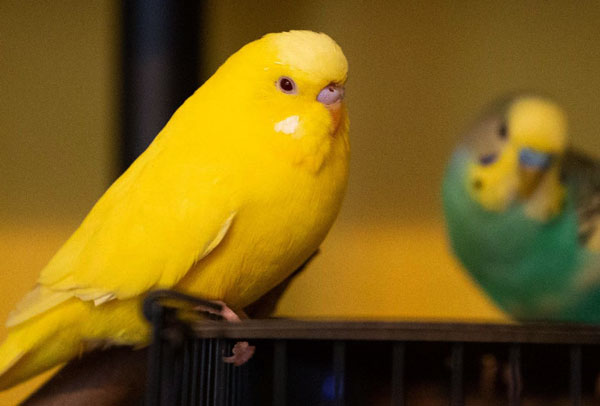
1. DNA
A Bird DNA test is done when you can’t tell the budgie’s gender by observing its physical appearance. The DNA samples are collected from the bird’s feathers or toenails and submitted for testing by avian experts. This method is easy and more precise, especially when you have doubts about determining the bird’s gender.
2. Physical Observations
The common part most breeders use to determine the bird’s gender is their cere. Male lutino budgies have a pink, purple or blue cere, which sometimes doesn’t change throughout their lifetime. Female lutino budgies on the other hand, have a brown, white, or light blue cere.
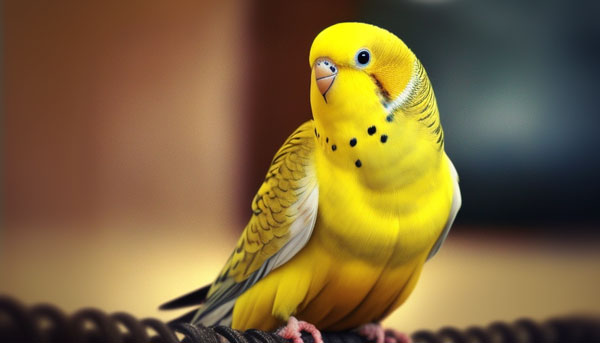
3. Tags
If you buy your pet from a breeder, they’re more likely to give you a tag containing the bird’s information. From this tag, you can learn the bird’s gender and also age. However, if the tag is not provided, you should use other methods to determine the gender.
How To Tell the Age of a Lutino Budgie?
Like other mutations, there are visual ways to tell if your budgie is male or female. Males are difficult to ascertain since they can maintain a pink cere for life, which is among the ways to tell. However, an avian veterinarian can determine the bird’s age.
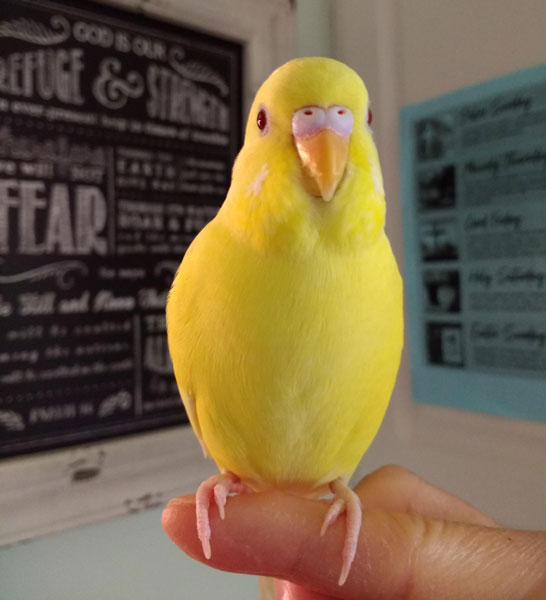
Below are some ways to tell the age of your lutino budgie.
1. For female lutino budgies who are more likely to change the cere color, use it to tell the age. Female lutino parakeets have a white cere till they’re a year old.
2. You can determine the bird’s age by observing its body size. A budgie less than a year old is visually smaller than one that has more than 12 months.
3. Younger birds less than a year old are also less likely to fly than the older ones. You can use this knowledge to observe your bird’s activity to determine its age.
4. Eye appearance can also be used to tell the bird’s age. A light pink circle around the red-eye or white for the black-eyed is visible by light or flashing a torch if a budgie is older than a year.
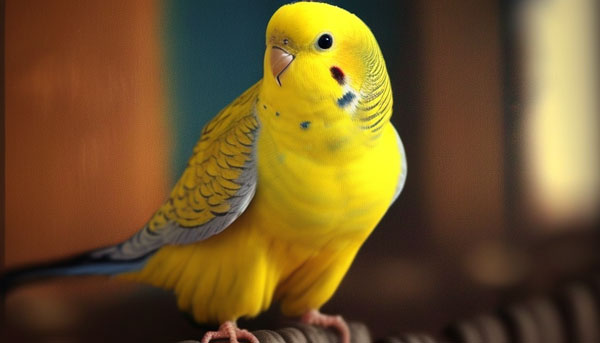
Lutino Budgie Growth Rate
The Lutino budgie growing process doesn’t differ from the one from other mutations. With a precise selection of the pair, breeders increase the probability of breeding a lutino budgie. Below are a few notable stages of the lutino budgie.
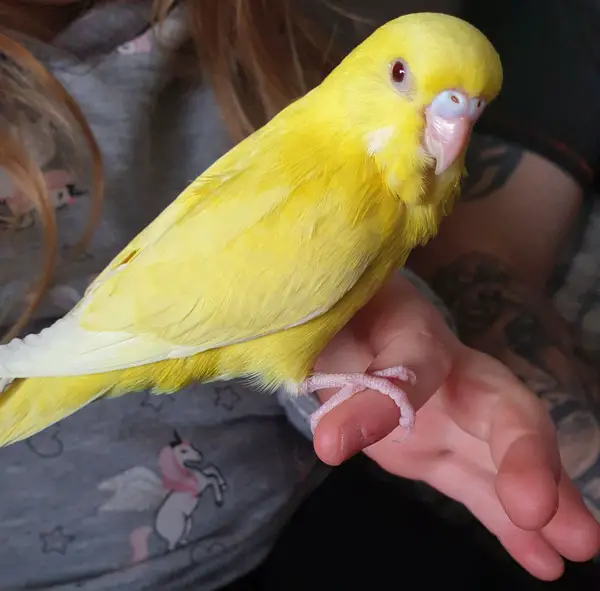
| Day | Progress |
| Day 1 | On the first day, the birds are born naked.Their eyes are closed, and they can’t see.Budgies cannot support their heads either on the first day. |
| Day 2 | Down feathers start to grow to keep them warmBoth male and female budgies work hard to feed the young. |
| Day 7 | By a week, the bird’s eyes are slightly open.The bird cannot stand or support their headSmall feathers start to grow. |
| Day 14 | In two weeks, the bird can now support its neck.Its eyes are also fully open, and the colors are red or black.The yellow feathers are more colored in the feather area. |
| Day 21 | By this time, budgie owners and breeders can tell the bird’s colorThe bird can perch stronger than before. |
| Day 28 | By four weeks, the bird should have at least 90 percent of its feathers.The bird can also eat seeds as the beak has grown stronger. |
| Day 31 | Most birds are wined by this period as they are strong enough to crack seeds.The birds are also more comfortable while flying. |
Lutino Budgie Lifespan?
Proper care and diet are two crucial factors affecting any pet’s lifespan. The budgie is no exception and requires slightly advanced care to handle. However, with proper care, lutino budgies can live between 10 and 15 years.
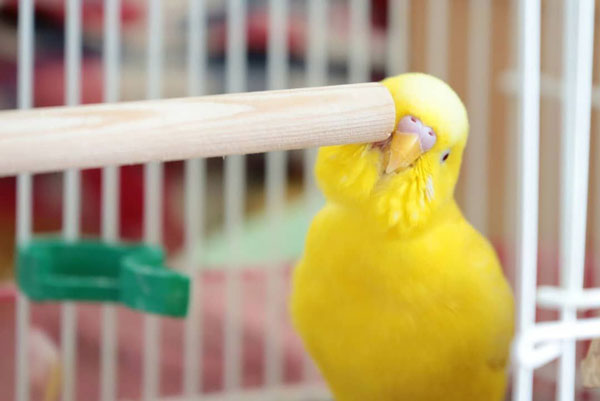
Since the lutino color includes a bright base yellow color, you can provide them with a bird bath regularly. The birds should also be kept in a cage with multiple toys to play with since they’re social creatures. Eliminate any strong odor near the bird’s cage, like cigarette smoke or gasses.
What Do Lutino Budgies Eat?
Lutino Budgies’ diet should contain all the nutrients they need for a balanced diet. Vegetables and pelleted avian food are some of the foods budgies require. They can also snack on spray millet which can be hand-held or fed for the birds to eat by themselves.
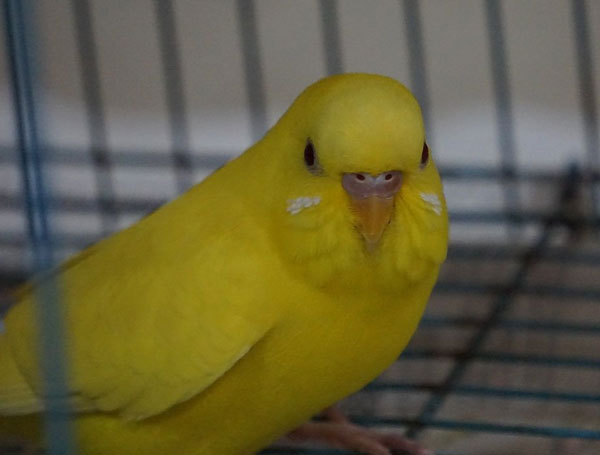
Lutino budgies can eat spinach, broccoli, carrot, and other leafy greens. They can also eat fruits like bananas, apples, nectarines, blueberries, and strawberries among others. It’s best to visit your avian pet for diet recommendations to provide the nutrients the pet requires most.
How To Tell Lutino Budgie Age?
Lutinos are ideal pet birds that live for up to 15 years. Enjoying their company for the longest time can be so much fun. As such, every potential buyer wishes to know their lutino budgie’s age beforehand. The best thing about having their exact age is to know how well to tame them, depending on their age.
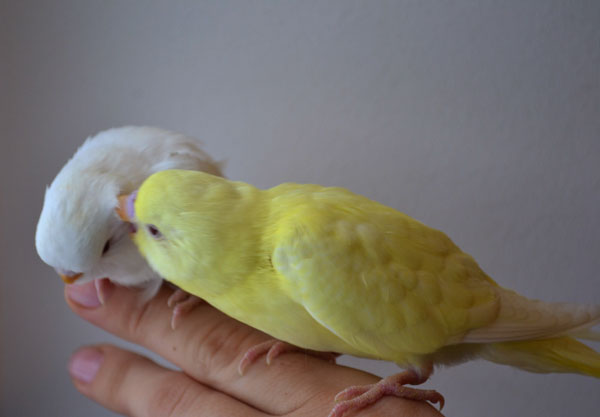
The easiest way to know your budgie’s age is to ask its breeder. Alternatively, you can check the tag on their leg. The tag usually has distinct colors to symbolize the year of hatchery.
Are Lutino Budgies Healthy?
Lutino budgies are a result of inbreeding done with close relative birds with the needed gene. Inbreeding is known to cause heart problems and cancer in birds. Also, inbred birds have a shorter life expectancy than outbred birds.
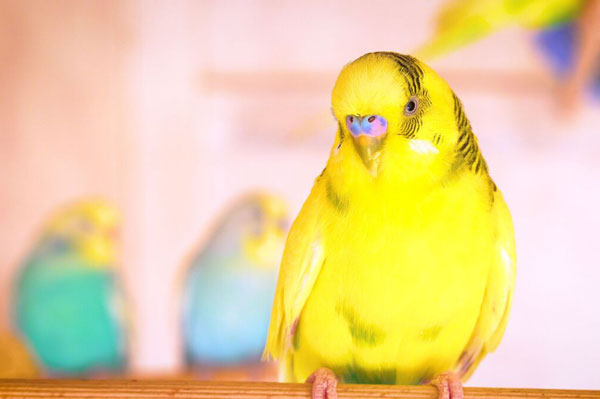
However, if bought from a reputable breeder who has healthy birds, the bird can be healthy. Also, how you take care of the bird can determine its health and increase its lifespan. Diet is crucial for budgie birds’ health, as well as toys for exercise.
FAQ
Among the budgerigars are various gene mutations that give some birds certain qualities. With these noticeable differences, pet lovers can’t help but research these mutations and know more about them. However, the research includes questions, some of which remain unanswered for a long time. Below are some of these frequently asked questions on their answers.
Even though they’re rare in a way, lutino budgies are not the rarest. The most limited budgie mutation is the anthracite budgerigar, characterized by gray feathers. However, the reason these birds are considered rare is because of their unsuccessful breeding rate.
It’s normal for lutino budgies to possess red or black eyes. As the ino gene removes the pigmentation, the bird’s feathers, claws, and eyes, the affected parts adapt to the new color. However, sometimes red eyes might signify that the bird has some infection and should be taken to a vet.
During the breeding and mutations, breeders make a variety of mutations which include the lutino. Most lutino budgies are completely yellow, while sometimes they possess paler colors on their tail. However, sometimes the bird’s yellow color might signify illness, disease, stress, or molting complications.
Outro
Despite appearing in few colors naturally, breeders have been able to create more budgie varieties. These new varieties are beautiful and involve multiple colors affecting each pet. However, some gene mutations include a particular color that is rare compared to other mutations.
Lutino budgies are some of these varieties affected by the ino gene mutation. This changes their color to yellow since it affects the green/yellow color series. The birds under this mutation are characterized by red eyes, orange beaks, pink feet, and sometimes white cheeks. Despite having a color difference, most of the birds’ requirements are the same as the other mutations.
